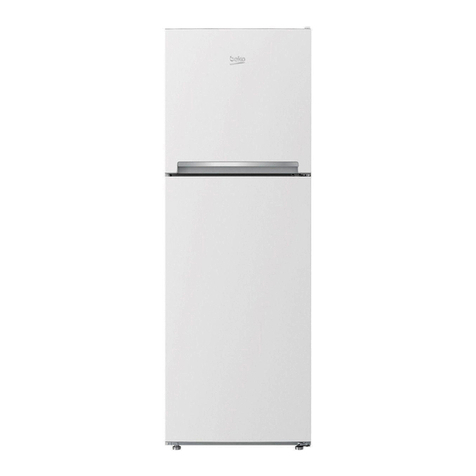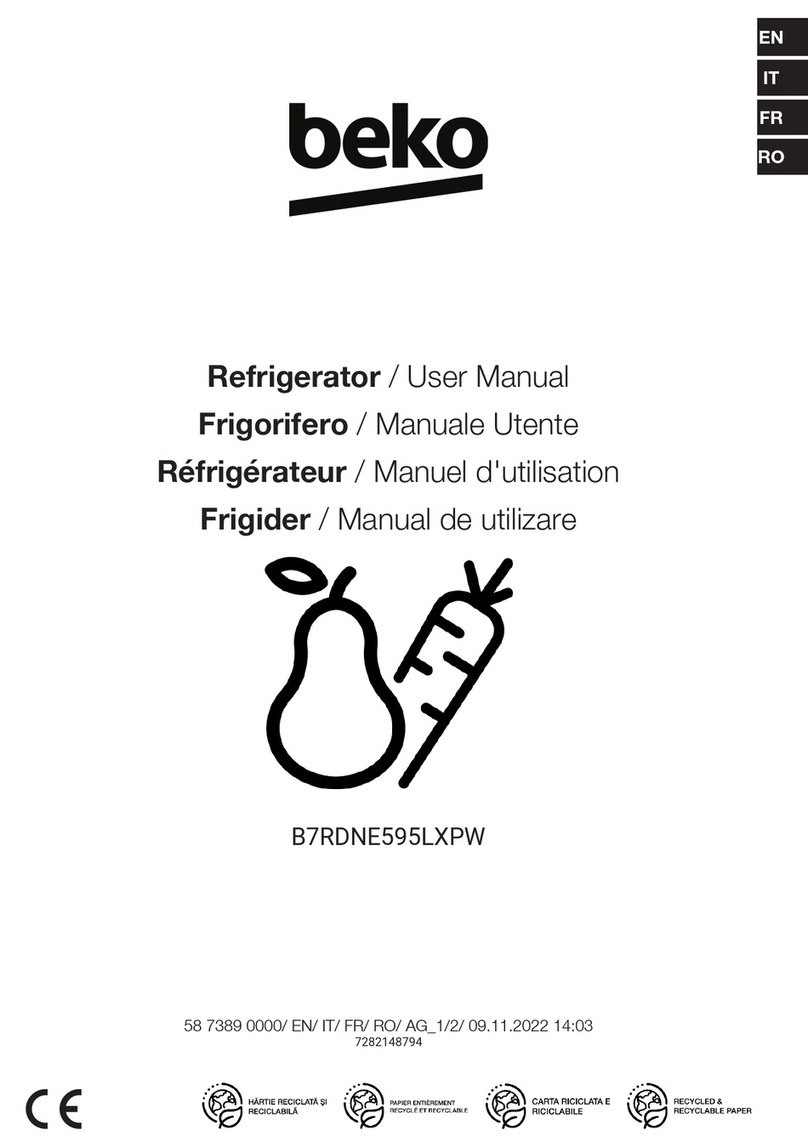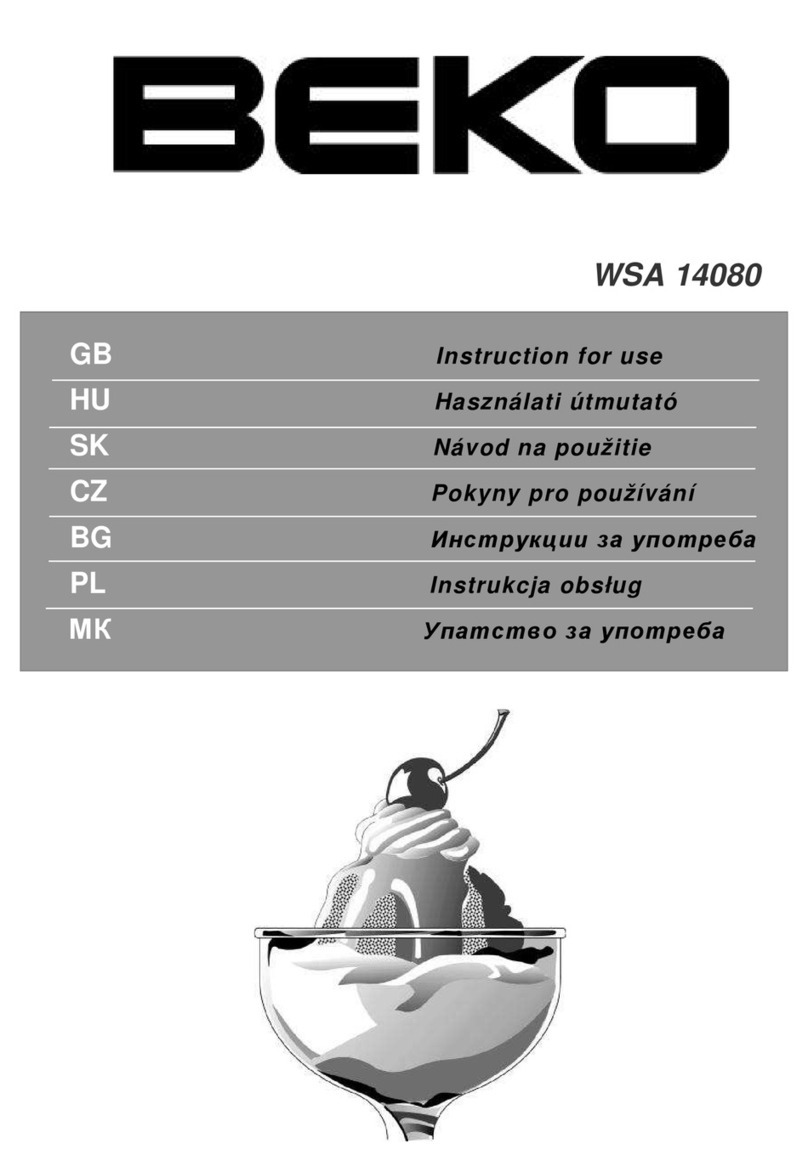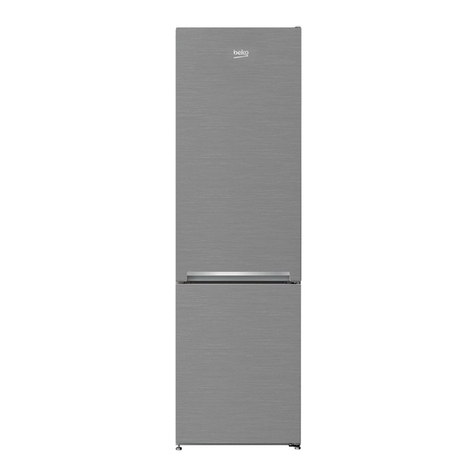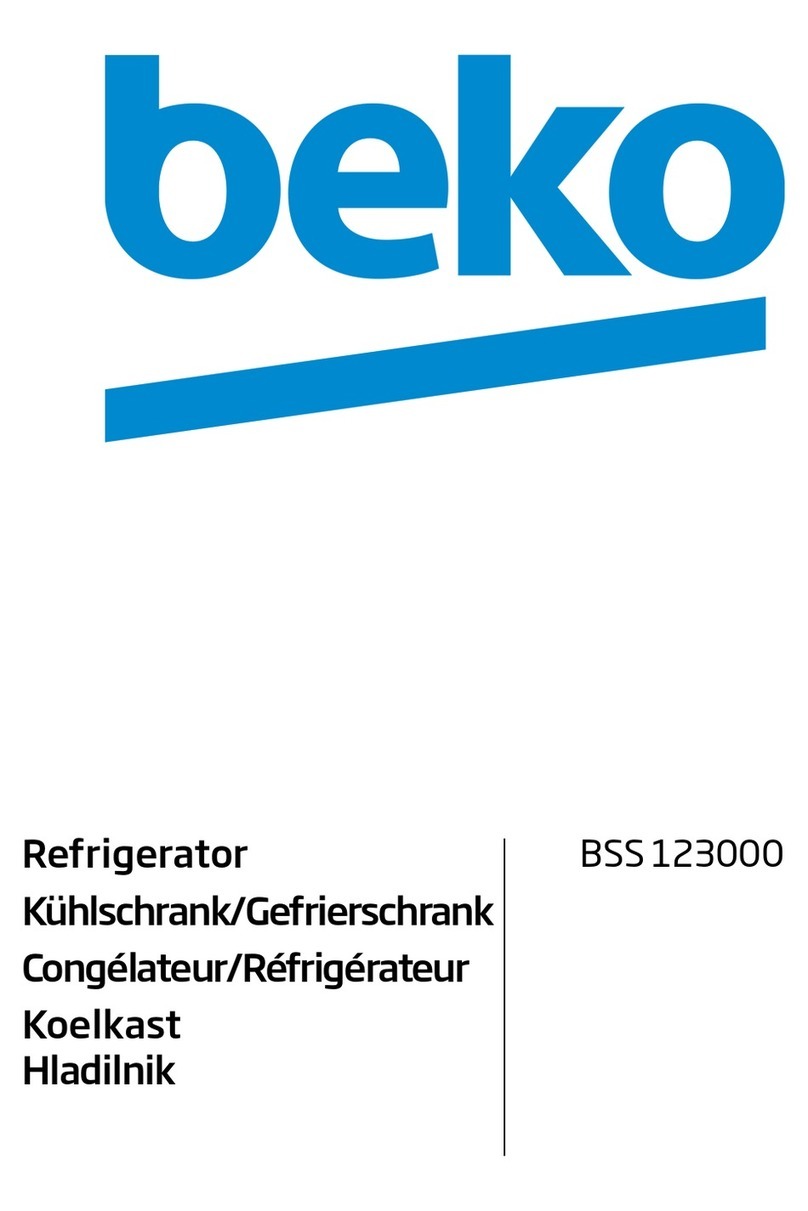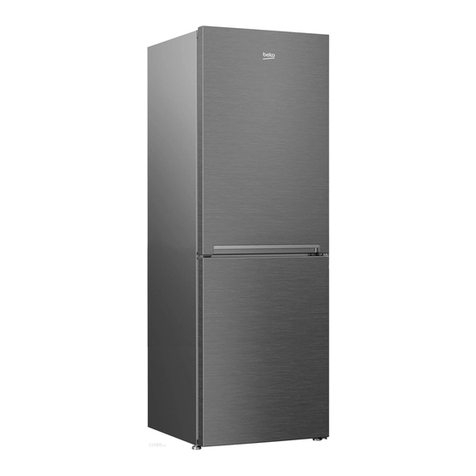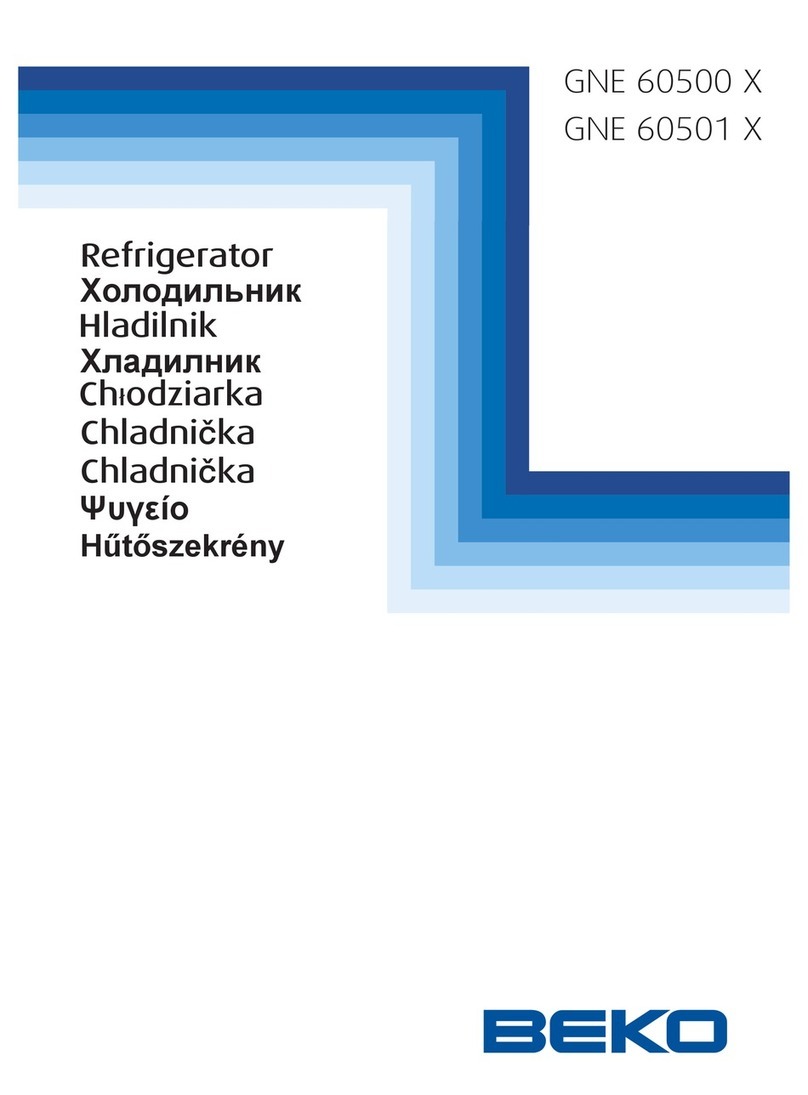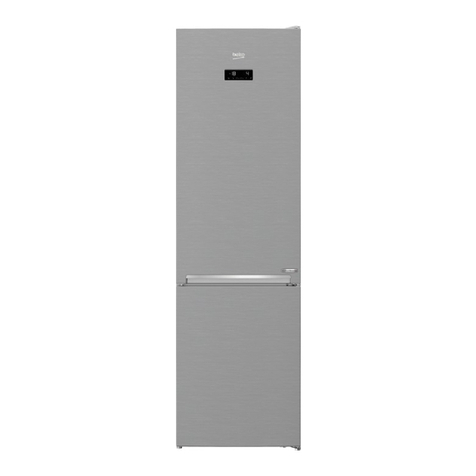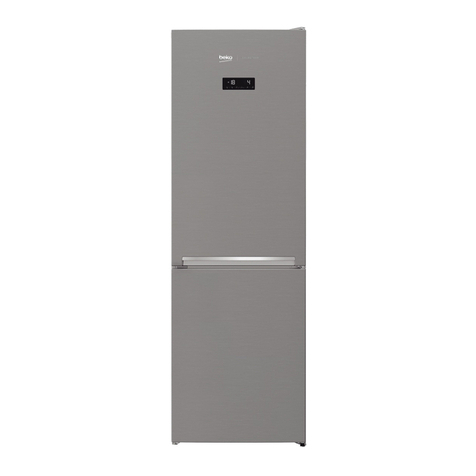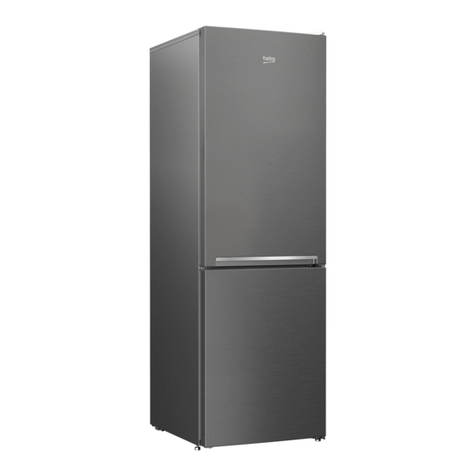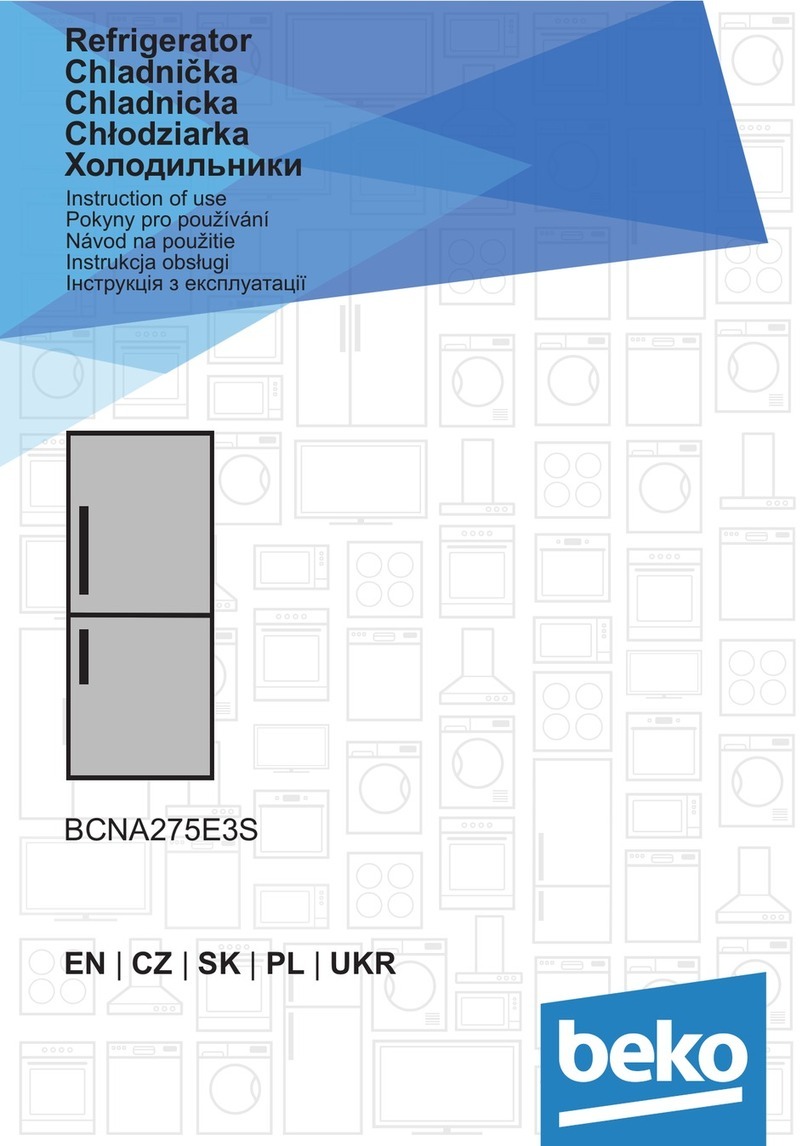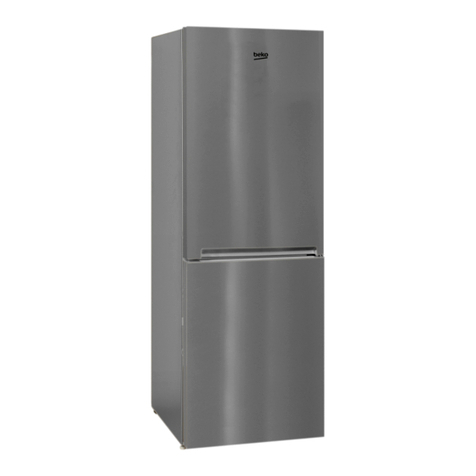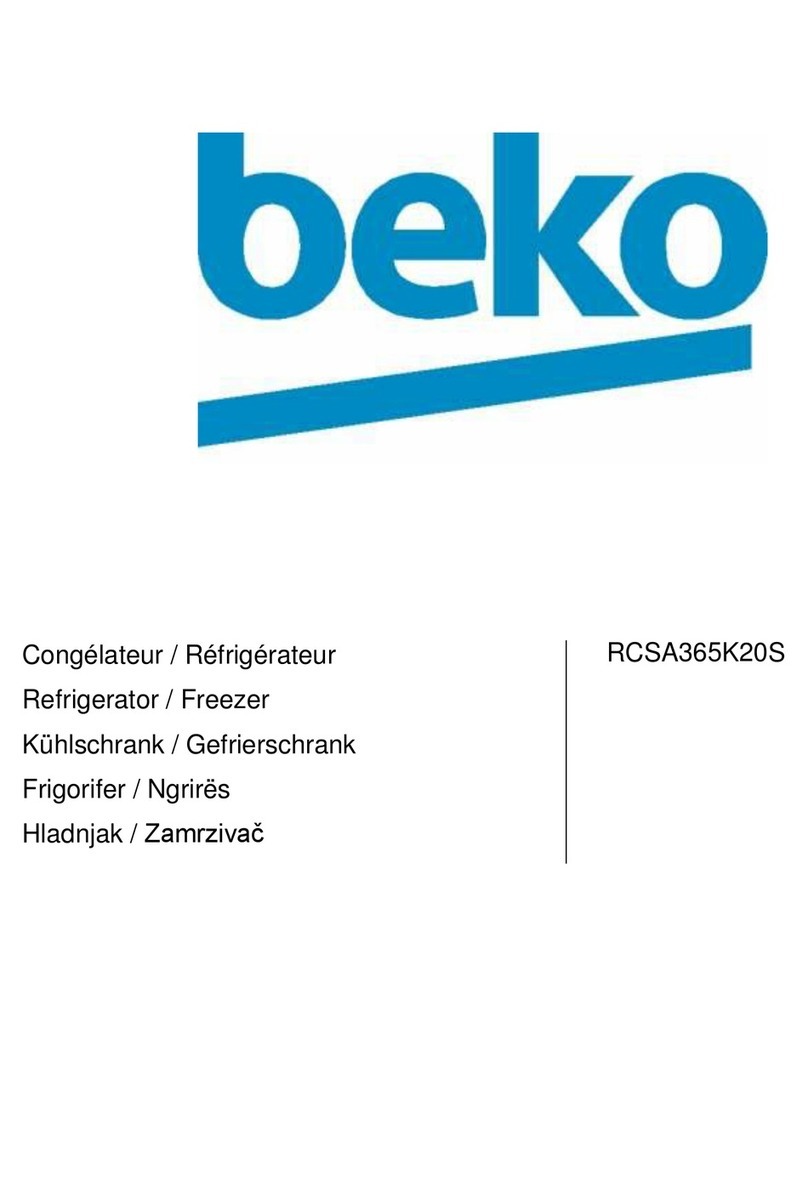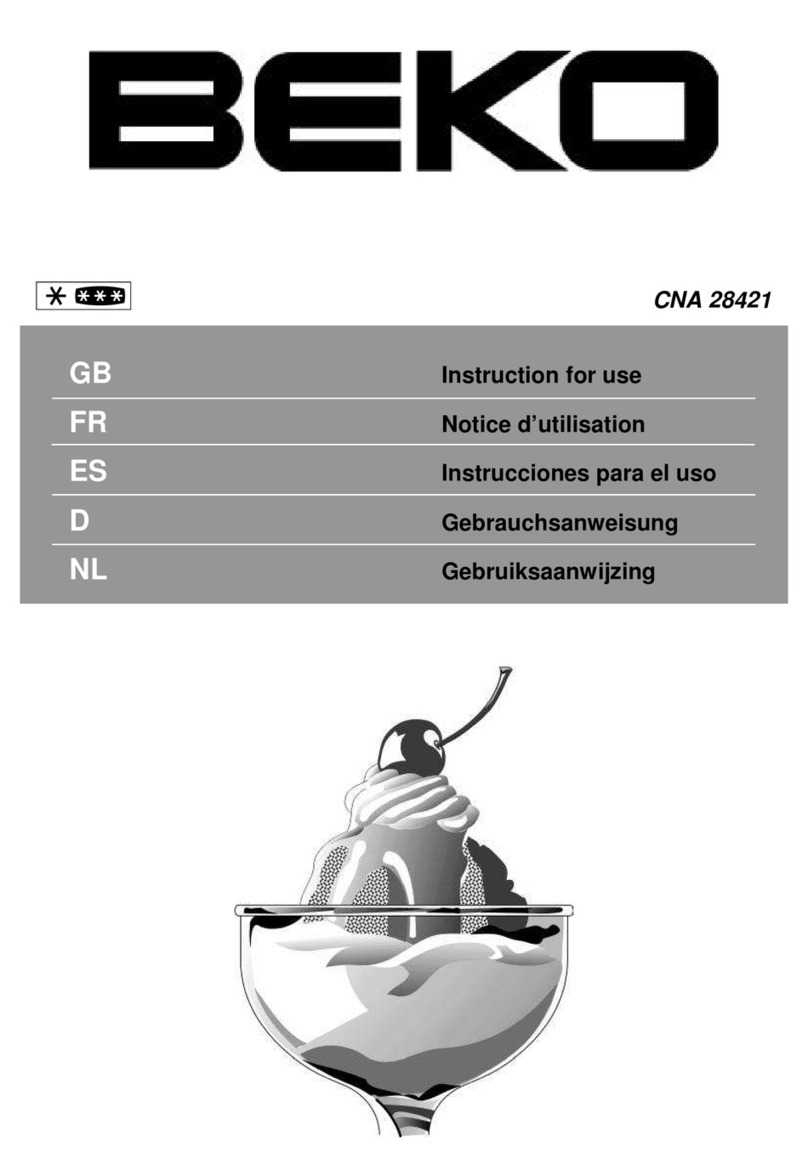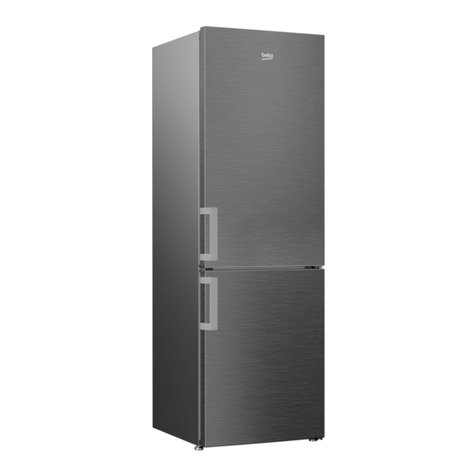WARNING!
In order to ensure a normal operation of your refrigerating appliance, which uses a completely environmentally
friendly refrigerant the R600a (flammable only under certain conditions) you must observe the following rules:
Do not hinder the free circulation of the air around the appliance.
Do not use mechanical devices in order to accelerate the defrosting, others than the ones recommended by
the manufacturer.
Do not destroy the refrigerating circuit.
Do not use electric appliances inside the food keeping compartment, other than those that might have been
recommended by the manufacturer.
UPOZORNĚNÍ!
Aby byl zajištěn normální provoz vaší chladničky, která používá pro životní prostředí zcela neškodné chladicí
médium R600a (vznětlivé pouze za určitých podmínek), musíte dodržet následující pravidla:
Nebraňte ve volné cirkulaci vzduchu kolem přístroje.
Nepoužívejte mechanická zařízení pro zrychlení odmražení kromě těch, která jsou doporučená výrobcem.
Nelikvidujte chladicí okruh.
Nepoužívejte elektrické spotřebiče uvnitř prostoru pro potraviny kromě těch, která by mohl doporučit výrobce.
VAROVANIE!
Aby sa zabezpečila normálna prevádzka vašej chladničky, ktorá používa úplne ekologicky nezávadné chladivo
R600a (horľavé len pri určitých podmienkach), musíte dodržiavať nasledujúce pravidlá:
Nebráňte voľnej cirkulácii vzduchu okolo spotrebiča.
Nepoužívajte mechanické prístroje na urýchľovanie rozmrazovacieho procesu, iné ako odporúča výrobca.
Neporušujte chladiaci okruh.
Nepoužívajte elektrické spotrebiče vo vnútri pípacieho priestoru potravín, iné ako tie, ktoré odporúčal výrobca.
UWAGA!
Aby zapewnić normalną pracę tej, wykorzystującej całkowicie przyjazny środowisku (łatwopalny tylko w pewnych
warunkach) środek chłodniczy R600a, chłodziarko-zamrażarki, należy przestrzegać następujących zasad:
Nie należy blokować swobodnego przepływu powietrza wokół chłodziarko-zamrażarki.
W celu przyśpieszenia rozmrażania nie należy używać żadnych innych urządzeń mechanicznych niż zalecane
przez producenta.
Nie wolno uszkodzić obwodu chłodniczego.
Wewnątrz komory przechowywania żywności nie należy używać żadnych innych urządzeń elektrycznych niż
ewentualnie zalecanych przez producenta.
UPOZORENJE!
Da biste obezbedili normalan rad Va.eg fri.idera, koji koristi ekolo.ki rashlađivač R600a (a koji je zapaljiv samo
pod određenim okolnostima) morate po.tovati sledeća pravila:
Nemojte ometati slobodan protok vazduha oko uređaja.
Nemojte koristiti druga mehanička sredstva osim onih koje predviđa proizvođač, da biste ubrzali odmrzavanje.
Nemojte uni.titi jedinicu za hlađenje.
Nemojte koristiti električne uređaje u odeljku za čuvanje hrane, osim onih koje preporučuje proizvođač.
